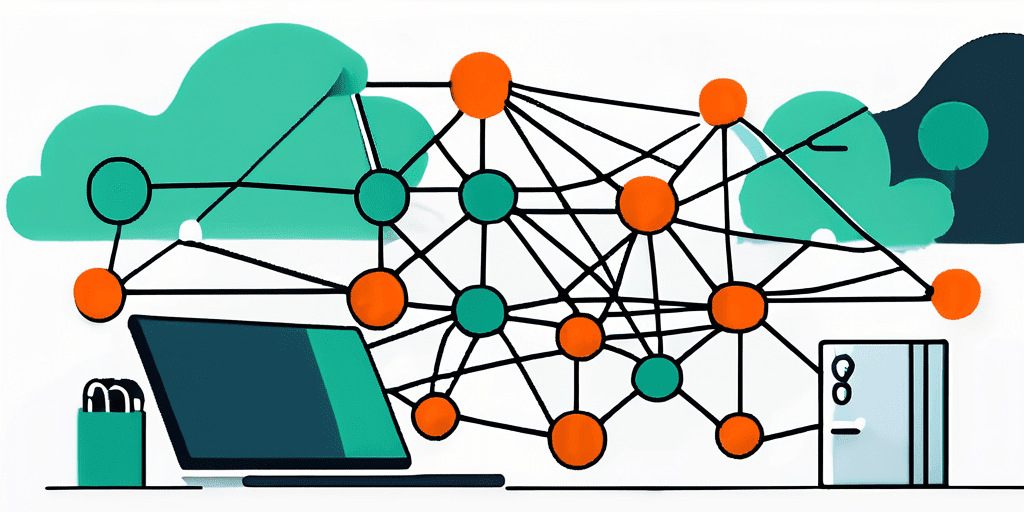Updated July 12, 2025
In today’s digital landscape, where cyber threats loom large, organizations must proactively safeguard their networks and sensitive data. One approach gaining increasing traction is network segmentation, which involves dividing a network into smaller, isolated segments to enhance security. By implementing this strategy, businesses can fortify their defenses and mitigate potential breaches.
Understanding Network Segmentation
At its core, network segmentation entails splitting a network into multiple subnetworks or segments. Each segment is then isolated from the others, creating distinct security zones. This isolation restricts the lateral movement of threats and limits the impact of a potential breach, as attackers find it challenging to traverse through different segments.
Network segmentation not only helps to contain threats but also facilitates better network management. Administrators can apply tailored security controls and monitor network traffic more effectively by categorizing devices and systems into separate segments based on their functionalities.
Definition and Basics of Network Segmentation
Network segmentation refers to partitioning a network into multiple segments, creating boundaries that prevent unauthorized access and limit the potential damage from a security incident. These segments can be made using various techniques, such as virtual local area networks (VLANs) and subnetting, which we will explore further in subsequent sections.
The fundamental principle behind network segmentation is the principle of least privilege, where each segment only grants access to resources based on the needs and permissions of that particular segment. This approach minimizes the attack surface and reduces the potential impact of a breach.
Importance of Network Segmentation in Cybersecurity
Cyberattacks have become more sophisticated, and traditional security measures alone are no longer sufficient to protect against evolving threats. Network segmentation has emerged as a crucial strategy in cybersecurity due to the following reasons:
- Containment of Breaches: By isolating segments, organizations can limit the lateral movement of attackers, preventing the spread of a breach across the network.
- Granular Access Controls: Each segment can have its access controls and restrictions, ensuring only authorized users can access specific resources.
- Reduced Attack Surface: Segmenting a network effectively shrinks the attack surface, making it more challenging for attackers to exploit vulnerabilities and gain unauthorized access.
- Compliance Requirements: In many industries, such as healthcare and finance, network segmentation is a mandatory regulatory compliance requirement.
- Improved Network Performance: By separating network traffic into logical segments, organizations can prioritize critical applications and reduce network congestion, improving performance.
Network segmentation provides additional benefits beyond cybersecurity. For instance, organizations can compartmentalize their network infrastructure based on different departments or business units. This compartmentalization enhances operational efficiency by providing dedicated resources and services to specific teams.
Network segmentation enables organizations to implement different security policies and protocols based on the sensitivity of the data being transmitted or stored within each segment. This ensures that highly sensitive information, such as personally identifiable information (PII) or intellectual property, receives enhanced protection through stricter security measures.
Additionally, network segmentation can aid in troubleshooting and network maintenance. When network issues arise, isolating the affected segment allows administrators to focus on resolving the problem without impacting the entire network. This targeted approach saves time and resources, minimizing disruptions to business operations.
Another advantage of network segmentation is its scalability. As organizations grow and expand, they can easily add new segments to accommodate the increased network traffic and devices. This scalability ensures the network remains efficient and secure, even as the organization evolves.
The Role of Network Segmentation in Security Strategy
Network segmentation serves as a vital component of an organization’s security strategy. By implementing robust segmentation practices, businesses can fortify their security posture and safeguard critical assets.

Network segmentation involves dividing a network into smaller, more manageable segments. Each segment is isolated from the others, creating separate zones that can be individually secured. This approach provides several benefits in terms of security and risk management.
Enhancing Security Posture with Network Segmentation
Organizations can enhance their security posture by implementing network segmentation using industry best practices. This involves segmenting the network based on business functions, trust levels, and data classification. By grouping similar devices, applications, and systems together, administrators can apply specific security controls and policies tailored to each segment’s unique requirements.
For example, a financial institution may have separate segments for customer-facing systems, internal employee systems, and back-end infrastructure. Each segment can have its own firewall rules, access controls, and monitoring mechanisms. This granular approach allows organizations to focus their security efforts where they are most needed, reducing the attack surface and minimizing the impact of potential breaches.
Additionally, by separating critical assets from the rest of the network, organizations can prioritize their protection, ensuring that resources with higher risk levels receive greater attention and security investments. This can include isolating sensitive databases, intellectual property repositories, or systems that handle financial transactions. By implementing strict controls and monitoring mechanisms around these critical assets, organizations can significantly reduce the likelihood of unauthorized access or data breaches.
Mitigating Cyber Threats through Network Segmentation
Network segmentation is a formidable defense against a wide range of cyber threats. By dividing the network into segments, organizations can enforce strict access controls and monitor network traffic with greater granularity. This enables them to detect and thwart potential threats more effectively.
For example, if an attacker gains access to one network segment, network segmentation limits their ability to move laterally and access sensitive data in other segments. This containment helps prevent the spread of the breach, minimize data exfiltration, and diminish the impact on the organization as a whole.
Furthermore, network segmentation allows organizations to implement different security measures based on each segment’s risk profile. For example, segments that handle highly sensitive data may require multi-factor authentication, intrusion detection systems, and advanced threat analytics, while less critical segments may have more basic security controls in place. This approach ensures that security resources are allocated where they are most needed, maximizing the effectiveness of the security strategy.
Implementing Network Segmentation
Implementing network segmentation requires careful planning and execution to ensure its effectiveness. Here, we will explore the key steps in successfully implementing network segmentation.

Network segmentation is a crucial strategy for enhancing the security of an organization’s network infrastructure. By dividing the network into smaller, isolated segments, organizations can limit the potential impact of a security breach, prevent lateral movement, and protect sensitive data from unauthorized access.
Steps to Effective Network Segmentation
1. Assess Network Architecture: Before implementing network segmentation, it is essential to have a comprehensive understanding of the existing network architecture. This assessment helps identify critical assets, business functions, and dependencies that need to be segmented. Organizations can determine the most effective segmentation strategy by conducting a thorough analysis.
2. Define Segmentation Criteria: Once the network architecture assessment is complete, organizations must define the network segment criteria. Trust levels, data sensitivity, compliance requirements, and regulatory standards should be considered. By establishing clear segmentation criteria, organizations can ensure that the right level of security is applied to each segment.
3. Create Logical Segments: With the segmentation criteria in place, organizations can create logical segments within their network. Techniques such as VLANs (Virtual Local Area Networks) or subnetting can segregate the network based on the defined criteria. This step involves configuring network devices, such as switches and routers, to enforce the separation between segments.
4. Deploy Access Controls: Once the logical segments are created, access controls and policies must be implemented for each segment. This involves defining and enforcing rules to determine which users and devices can access resources within each segment. Robust authentication mechanisms, such as multi-factor authentication, and encryption should be implemented to enhance security further.
5. Monitor and Audit: Regular monitoring and auditing are crucial for maintaining the effectiveness of network segmentation. Organizations can continuously monitor network traffic and segment performance to identify any unauthorized access attempts or potential security incidents. Regular audits help ensure that the segmentation rules and access controls are being adequately enforced.
Challenges in Network Segmentation Implementation
While network segmentation offers numerous security benefits, organizations may encounter challenges during the implementation process. Some common challenges include:
- Complexity: Implementing network segmentation can be complex, especially in large, interconnected networks. Careful planning and coordination are necessary to minimize disruptions. Organizations need to consider the impact on network performance and ensure that the segmentation strategy aligns with their overall network architecture.
- Legacy Systems and Dependencies: Organizations with legacy systems may face difficulties in segmenting their networks due to interdependencies and compatibility issues. These legacy systems may not support the necessary network segmentation techniques, requiring additional effort to ensure their inclusion in the segmented environment.
- Increased Management Overhead: Managing multiple segments can increase the complexity and administrative overhead. Organizations need to allocate additional resources and expertise to handle the management of each segment effectively. This includes monitoring access controls, updating policies, and ensuring consistent enforcement of security measures.
- Dynamic Environments: Maintaining consistent segmentation can be challenging in dynamic environments where changes occur frequently. Organizations must establish processes and protocols for regular updates and adjustments to the segmentation strategy. This ensures that new devices, applications, or changes in network topology are properly incorporated into the segmented environment.
Despite these challenges, implementing network segmentation is a critical step toward strengthening an organization’s overall security posture. By carefully planning and executing the segmentation strategy, organizations can mitigate the risks associated with unauthorized access, data breaches, and lateral movement within their network.
Network Segmentation Techniques
Network segmentation can be achieved using various techniques, each offering unique advantages and considerations.

VLAN Segmentation
VLAN segmentation involves dividing a physical network into multiple virtual networks, each representing a different logical segment. This is achieved by assigning devices with similar characteristics or requirements to a particular VLAN.
With VLAN segmentation, businesses can leverage existing network infrastructure and segregate devices based on functional requirements or security policies. VLANs offer flexibility and scalability, allowing organizations to modify and expand their network segments easily.
Subnetting and IP Addressing
Subnetting involves dividing a network into smaller subnets, each with its own IP address range. This technique allows for finer-grained control over network traffic and access permissions. By subnetting a network, organizations can allocate IP addresses more efficiently and logically group devices or systems based on their proximity or functional requirements.
Subnetting can provide enhanced security by isolating devices within a subnet and controlling the flow of traffic between subnets using routers or firewalls. It allows organizations to implement different security measures and policies based on the characteristics of each subnet.
Evaluating Network Segmentation Effectiveness
Implementing network segmentation is the first step; organizations must continuously evaluate their effectiveness to ensure maximum security.
Key Performance Indicators for Network Segmentation
Measuring the effectiveness of network segmentation requires monitoring specific key performance indicators (KPIs) to assess the overall security posture. Some essential KPIs for evaluating network segmentation effectiveness include:
- Unauthorized Access Attempts: Monitor and track any unauthorized access attempts or anomalies in network traffic.
- Incident Response Time: Measure the time taken to detect and respond to security incidents within each network segment.
- Data Exfiltration: Evaluate the effectiveness of network segmentation by monitoring any attempts or successful incidents of data exfiltration.
- Compliance Adherence: Ensure that each network segment adheres to the necessary compliance requirements and regulations.
Continuous Improvement and Optimization of Network Segmentation
Network segmentation is not a one-time implementation; it requires continuous improvement and optimization to adapt to evolving threats and changing business requirements. Regular audits, security assessments, and updates are essential to maintain the effectiveness and relevance of network segmentation in the long run.
By analyzing security incident data, conducting penetration testing, and staying updated with industry best practices, organizations can enhance their network segmentation strategy and safeguard their networks against emerging threats.
Conclusion
Network segmentation offers a robust security strategy for organizations seeking to protect their networks and sensitive data. By implementing effective network segmentation techniques and continuously evaluating their effectiveness, businesses can reduce the risk of breaches, contain cyber threats, and strengthen their overall security posture. As cyber threats continue to evolve, network segmentation remains a critical aspect of any comprehensive cybersecurity framework.
As cyber threats continue to advance, ensuring the security of your network is more critical than ever. Blue Goat Cyber, a Veteran-Owned business, specializes in providing top-tier B2B cybersecurity services. Our expertise in medical device cybersecurity, penetration testing, and compliance with HIPAA, FDA, SOC 2, and PCI standards make us the ideal partner for fortifying your defenses. Don’t wait for a breach to threaten your operations. Contact us today for cybersecurity help and take a proactive step towards a more secure future for your organization.
